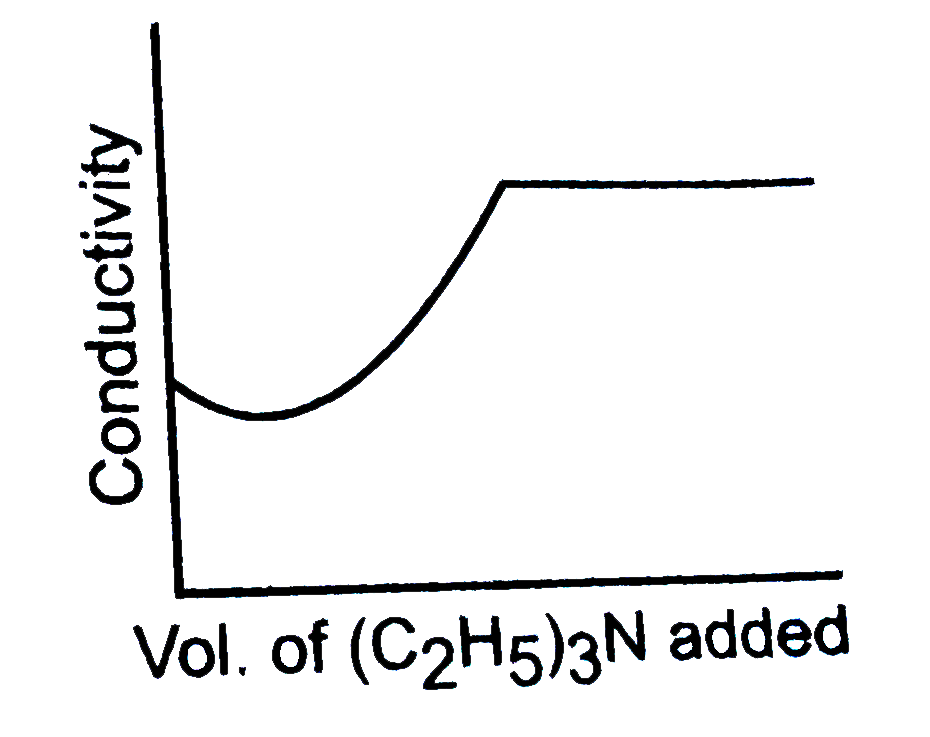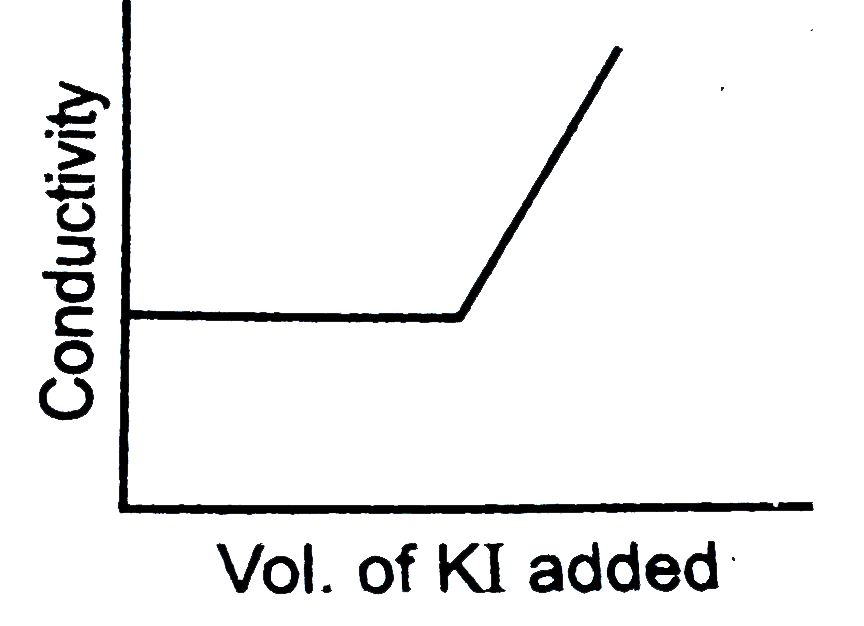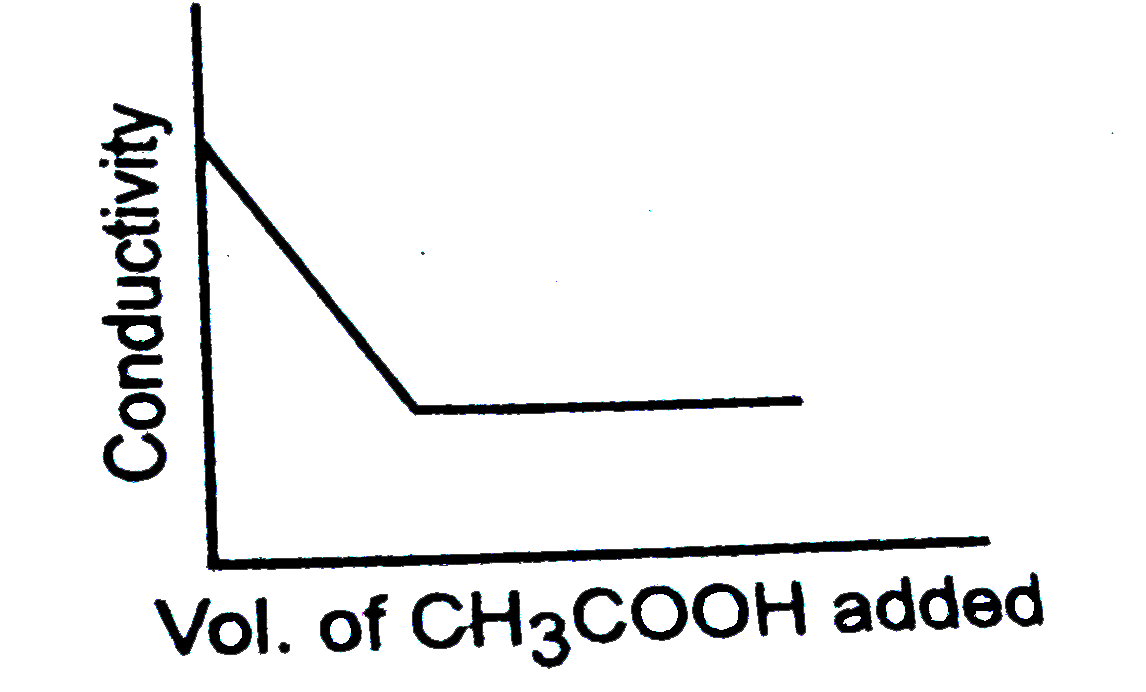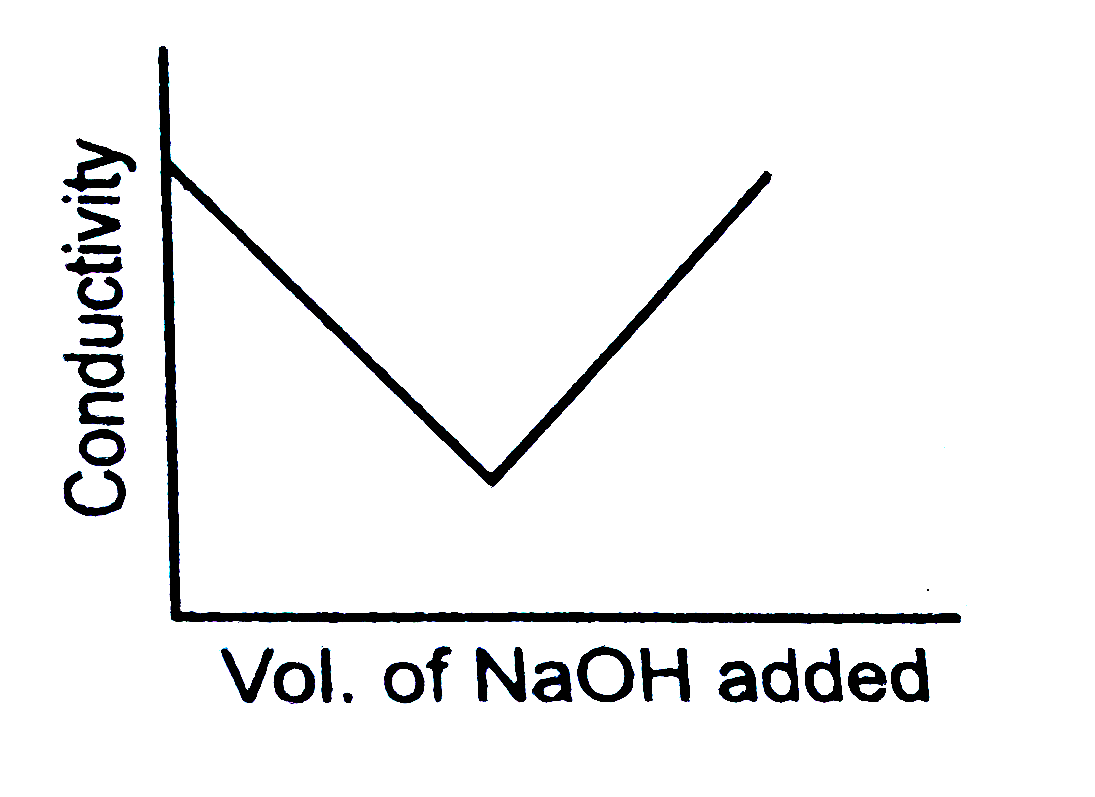A
P-3,Q-4,R-2,S-1
B
P-4,Q-3,R-2,S-1
C
P-2,Q-3,R-4,S-1
D
P-1,Q-4,R-3,S-2
Text Solution
The correct Answer is:A
P:CH3COOHweak acid+(C2H5)3Nweak base→CH3COO−+(C2H5)3+NH or CH3COO−+H++(C2H5)3N→CH3COO−+(C2H5)3+NH
CH3COOH is a weak acid. its cnductivity is low. on adding (C2H5)3N,H+ ions are replaced by heavier/bigger (C2H5)3+NH. hence, conductivity decreases. but now it becomes a buffer of CH3COOH+(C2H5)3+NH, therefore, [H+] remains constant but more and more of (C2H5)3+NH will be formed hence, conductivity
Keeps increasing, then neutralisation is complete, no more (C2H5)3+NH will be formed. hence, conductivity will remain constant. hence, ltBrgt P→3
Q:AgNO3+KI→AgI+KNO3
Ag++NO−3+K++I−→AgI+K++NO−3
On adding KI to AgNO3,Ag+ ions are replaced by K+ ions. hence, conductivity remains almost constant. after replacement of all Ag+ ions, KI now added gives K++I− ions. hence, conductivity keeps increasing thus, Q→4
R:KOH+CH3COOH→CH3COOK+H2OK++OH−+CH3COOH→CH3COO−+K++H2O
Initially, conductivity decreases due to replacement of OH− ions by CH3COO− ions. after complete neutralisation of KOH, now CH93)COOH added ionizes very little. hence, conductivity remains almost constant. hence, R→2
S:HI+NaOH→NaI+H2O
H++I++Na++OH−→Na++I−+H2O
As H+ ions are replaced by Na+ ions, conductivity decreases. after complete neutralissation of HI, NaOH now added will give Na++OH− ions. hence, conductivity will keep increasing
Hence S→1.




|
Topper's Solved these Questions
- ELECTROCHEMISTRYBOOK - PRADEEPCHAPTER - ELECTROCHEMISTRYEXERCISE - VALUE BASED QUESTIONS WITH ANWER (Matrix-Type Questions)
2 Videos
- ELECTROCHEMISTRYBOOK - PRADEEPCHAPTER - ELECTROCHEMISTRYEXERCISE - VALUE BASED QUESTIONS WITH ANWER (Integer Type Question)
8 Videos
- ELECTROCHEMISTRYBOOK - PRADEEPCHAPTER - ELECTROCHEMISTRYEXERCISE - VALUE BASED QUESTIONS WITH ANWER (Multiple Choice Questions-III Based on the given Passage/Comprehension)
13 Videos
- D- AND F-BLOCK ELEMENTSBOOK - PRADEEPCHAPTER - D- AND F-BLOCK ELEMENTSEXERCISE - IMPORTANT QUESTIONS
30 Videos
- GENERAL PRINCIPLES AND PROCESSES OF ISOLATION OF ELEMENTS BOOK - PRADEEPCHAPTER - GENERAL PRINCIPLES AND PROCESSES OF ISOLATION OF ELEMENTS EXERCISE - Curiosity Questions
2 Videos

